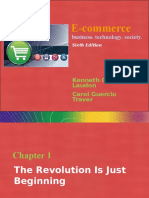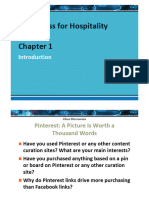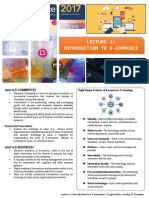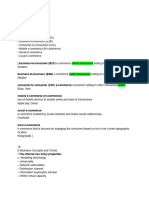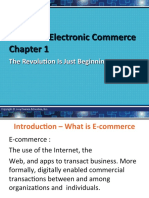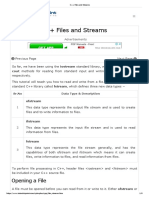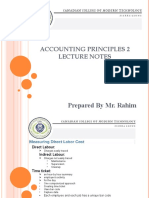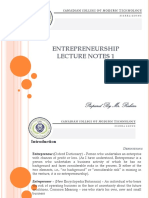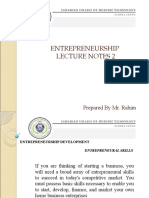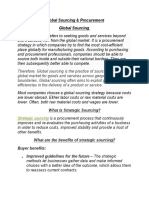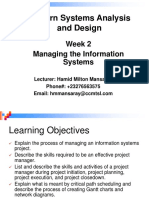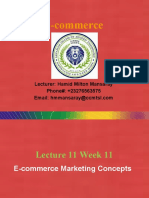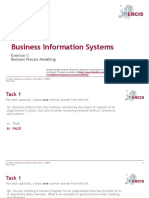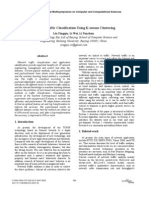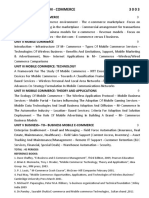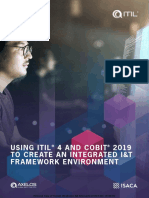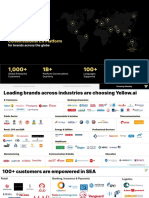0% found this document useful (0 votes)
95 views8 pagesE-commerce Trends and Facebook vs. MySpace
The document discusses key topics in e-commerce including definitions of e-commerce and e-business, trends in online business models, the growth of e-commerce and enabling technologies like broadband and wireless access. Major themes are also identified such as the impact of technology, business approaches, and societal issues on e-commerce. The future of e-commerce is predicted to involve traditional companies playing a dominant role alongside new startups as the technology continues to change commerce.
Uploaded by
Mohamed K MarahCopyright
© © All Rights Reserved
We take content rights seriously. If you suspect this is your content, claim it here.
Available Formats
Download as DOCX, PDF, TXT or read online on Scribd
0% found this document useful (0 votes)
95 views8 pagesE-commerce Trends and Facebook vs. MySpace
The document discusses key topics in e-commerce including definitions of e-commerce and e-business, trends in online business models, the growth of e-commerce and enabling technologies like broadband and wireless access. Major themes are also identified such as the impact of technology, business approaches, and societal issues on e-commerce. The future of e-commerce is predicted to involve traditional companies playing a dominant role alongside new startups as the technology continues to change commerce.
Uploaded by
Mohamed K MarahCopyright
© © All Rights Reserved
We take content rights seriously. If you suspect this is your content, claim it here.
Available Formats
Download as DOCX, PDF, TXT or read online on Scribd
/ 8







